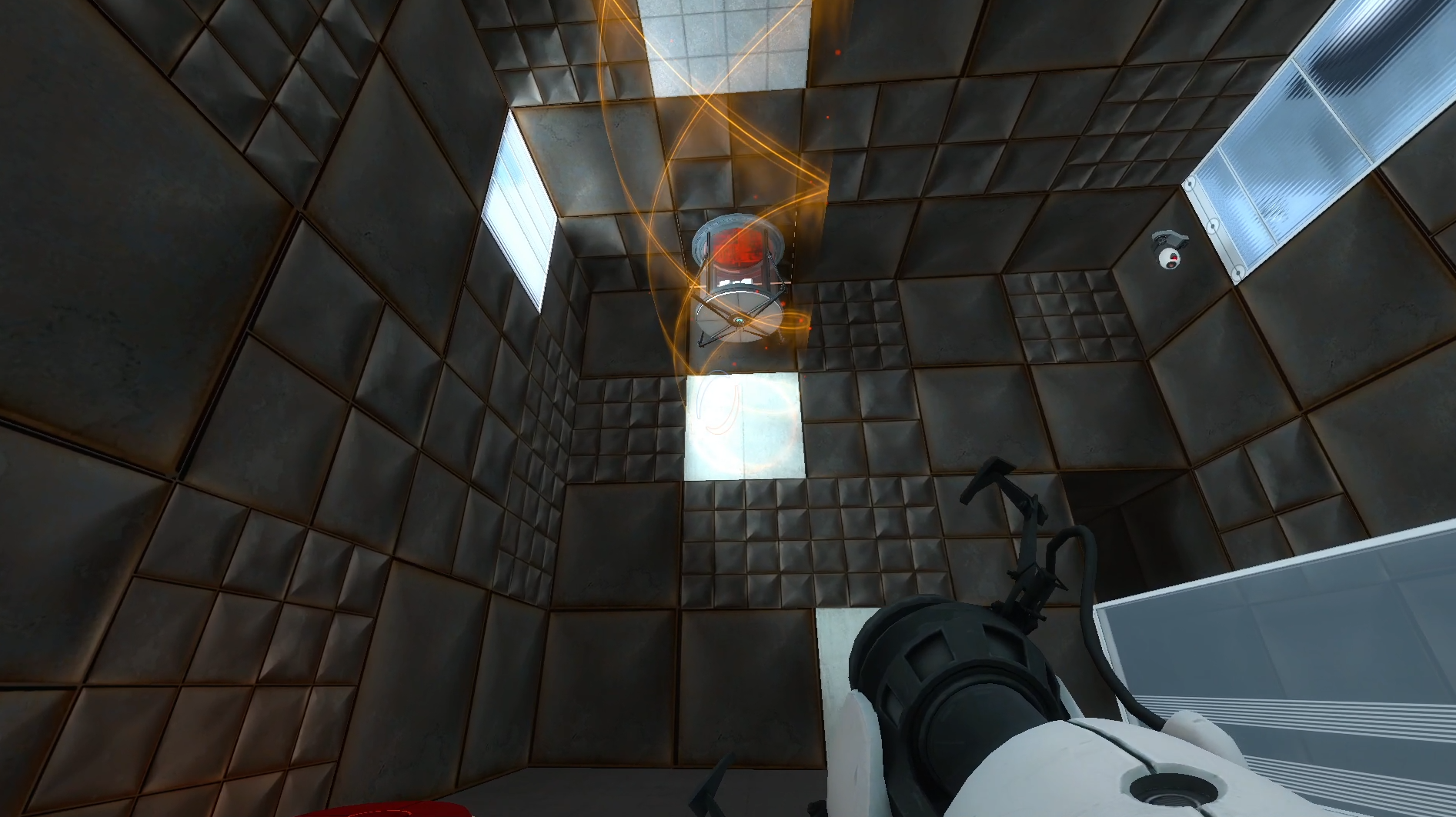Portal 2 Puzzle Level
I have recently been playing through the Portal games again and have been really hooked on the puzzles. I even started speedrunning Portal 1. My current personal best is 25:30 which is quite a lot slower than the world record of 14:23, but I enjoy it nonetheless. I really like the companion cube's introduction in Portal 1 and the way that the second game ends by reuniting the player with the companion cube, so I figured I would make my level centered around the companion cube.
View it on Steam
View on WorkshopProcess
This level was designed in the Portal 2 Puzzle Maker using BeeMod to expand the available tools and visual palette. The core concept centered around building a light narrative bond between the player and a companion cube—not just as a tool for solving puzzles, but as a character-like object the player carries with them. I started by designing a puzzle where the player retrieves the companion cube from an excursion funnel and uses it to activate a button that changes the funnel's polarity. This allows the player to ride the funnel to a pedestal button, which activates a light bridge back across the room. The player then returns for the cube and brings it to the final button that opens the exit door.
The layout was intentionally structured to have the player move back and forth between puzzle elements, reinforcing the idea that the cube isn't just something you use once and forget—it's something you carry with you, and solving the puzzle becomes a shared journey. However, I realized the current implementation doesn't quite give the player enough time to form that bond. In future updates, I plan to expand the level to include additional sections where the cube remains with the player longer and is required for multiple steps, deepening that connection and sense of partnership.

What I learned
This project gave me a deeper understanding of how to guide player flow using timing, layout, and puzzle logic. Managing excursion funnel polarity changes and sequencing actions with pedestal buttons and light bridges helped me think more critically about how puzzle elements interact and how to maintain clarity without holding the player's hand. I learned to use conveyance to subtly direct the player's attention while still leaving room for problem-solving and experimentation.
Designing around a non-destructible companion cube also forced me to think more carefully about softlocks and player freedom. Since the cube had to persist throughout the level, and will need to persist through any further rooms I add, I had to make sure the player couldn't accidentally lose it or lock themselves out of progression. This taught me to anticipate edge cases and player behavior more thoroughly. Even in a relatively small space, these constraints challenged me to think structurally and preemptively.
Although I didn't make full use of BeeMod's extended logic features in this version, integrating the Portal 1 visuals and GLaDOS voice lines gave the level a distinct tone. I plan to build on this base by expanding the puzzle with one or two additional rooms, where I'll take advantage of BeeMod's more advanced tools. Overall, this project was a valuable exercise in thinking like a systems designer—learning how to construct interconnected gameplay elements that feel intentional, testable, and satisfying to solve.